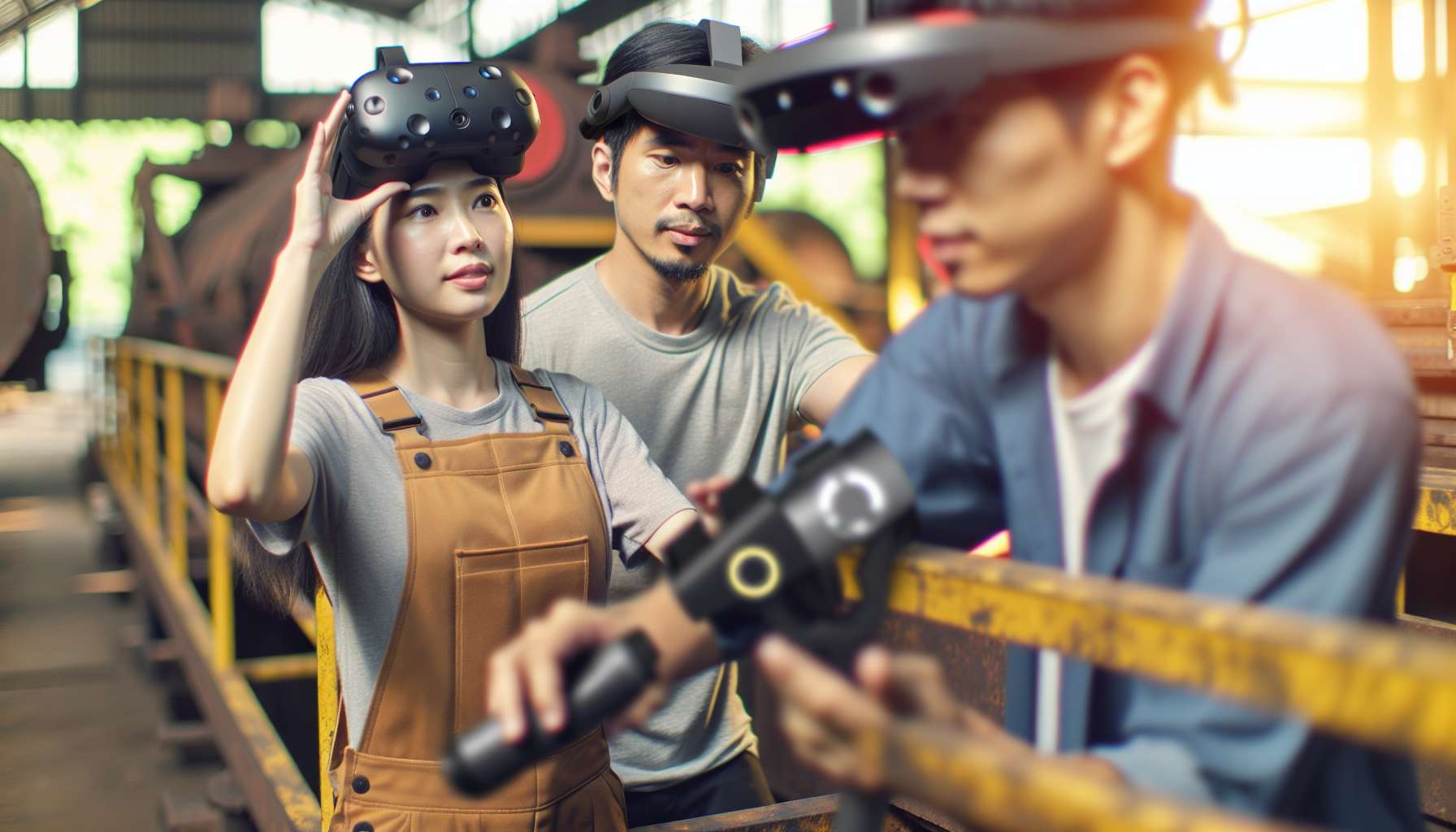Unlocking Operational Excellence: How AR Drives Efficiency in Industrial Operations
As technology continues to evolve, businesses are constantly seeking innovative solutions to enhance their operational efficiency and engage their workforce. One such solution that has gained significant traction in recent years is augmented reality (AR). By blending the digital and physical worlds, AR has proven to be a powerful tool for improving efficiency and engagement in industrial operations.
Enhancing Training and Onboarding Processes
One of the key areas where AR has made a significant impact is in training and onboarding processes. Traditional training methods often involve lengthy classroom sessions or cumbersome manuals, which can be time-consuming and less engaging for employees. With AR, companies can create immersive and interactive training experiences that allow employees to learn in a more practical and hands-on manner.
For example, imagine a new technician being onboarded in a manufacturing facility. Instead of relying solely on manuals and shadowing experienced workers, AR can provide step-by-step instructions and real-time guidance through wearable devices. This not only accelerates the learning process but also reduces the risk of errors and improves overall productivity.
Improving Maintenance and Repair Operations
In industrial operations, equipment breakdowns and maintenance issues can lead to costly downtime. AR can play a crucial role in streamlining maintenance and repair operations, minimizing disruptions, and maximizing uptime.
By overlaying digital information onto physical equipment, technicians can access real-time data, maintenance history, and troubleshooting guides, all within their field of view. This enables them to quickly identify and resolve issues, reducing the time required for repairs and minimizing the impact on production schedules.
Optimizing Warehouse and Logistics Processes
Efficient warehouse and logistics operations are essential for businesses to meet customer demands and maintain a competitive edge. AR can revolutionize these processes by providing real-time visibility, improving accuracy, and enhancing overall efficiency.
With AR-enabled smart glasses or mobile devices, warehouse workers can receive visual cues and directions for picking, packing, and shipping items. This eliminates the need for paper-based instructions or handheld scanners, reducing errors and increasing productivity. Additionally, AR can assist in inventory management by overlaying digital information on physical shelves, making it easier to locate and track items.
Driving Collaboration and Remote Assistance
AR also enables seamless collaboration and remote assistance, particularly in industries where experts are not always physically present on-site. Through AR-enabled devices, remote experts can provide real-time guidance and support to on-site technicians, eliminating the need for costly travel and reducing response times.
For example, in the oil and gas industry, AR can connect offshore workers with onshore experts, allowing them to share live video feeds, annotate instructions, and troubleshoot issues together. This not only improves efficiency but also enhances safety by minimizing the need for inexperienced workers to perform complex tasks without proper guidance.
Looking Ahead: The Future of AR in Industrial Operations
The potential applications of AR in industrial operations are vast and continue to expand. As the technology evolves, we can expect to see even more advanced features and capabilities that further enhance efficiency and engagement.
For instance, AR combined with artificial intelligence (AI) can enable predictive maintenance, where equipment issues are detected and resolved before they cause any disruptions. This proactive approach can save businesses significant costs and prevent unplanned downtime.
Furthermore, as AR devices become more lightweight, comfortable, and affordable, their adoption in industrial settings is likely to increase. This will enable more widespread implementation and integration of AR into existing workflows, driving operational excellence across various industries.
Conclusion
AR is no longer just a futuristic concept; it is a practical tool that can significantly improve efficiency and engagement in industrial operations. By leveraging AR’s capabilities in training, maintenance, logistics, and collaboration, businesses can unlock operational excellence and gain a competitive advantage in today’s fast-paced world.
As you explore the potential of AR efficiency in industrial operations, consider the unique needs and challenges of your business. Embrace the power of AR to transform your operations, empower your workforce, and drive success in the digital age.





